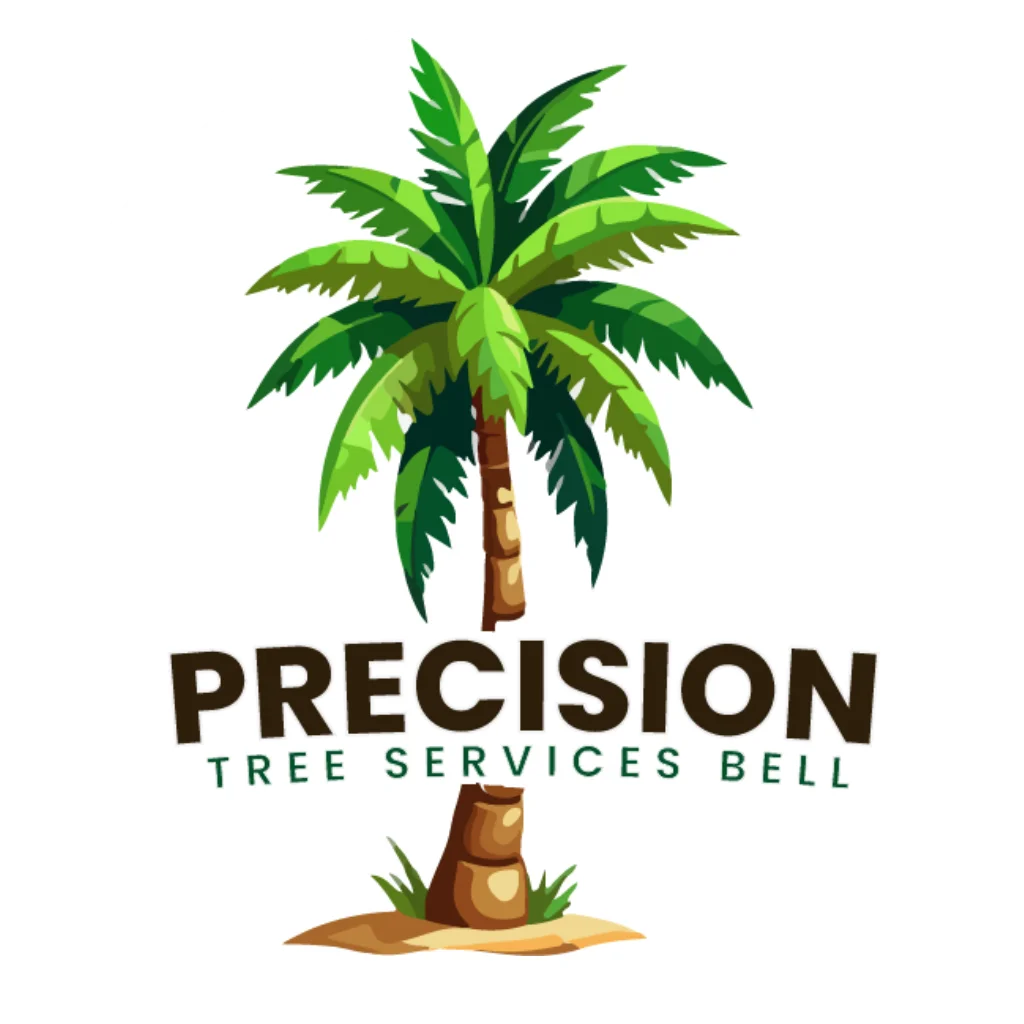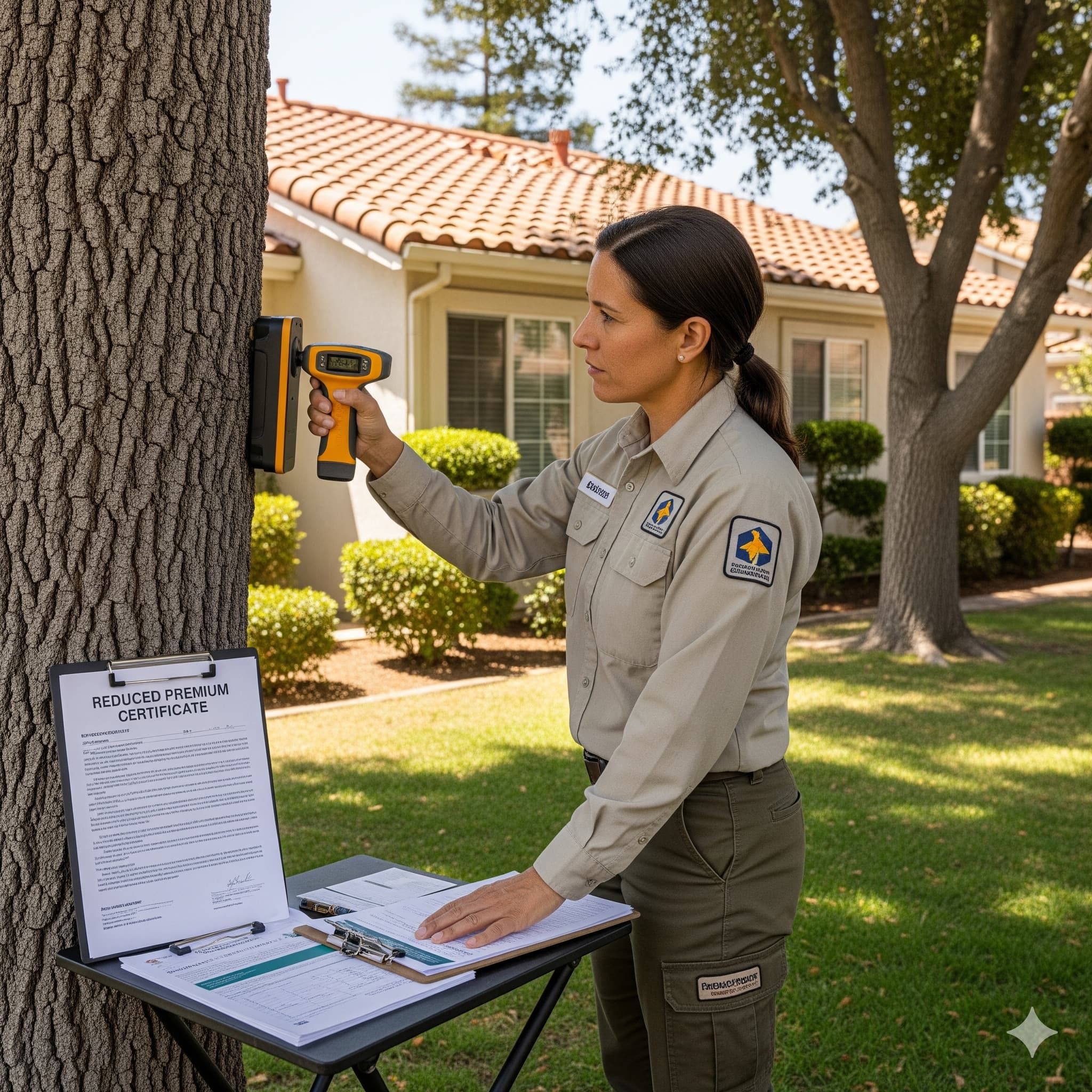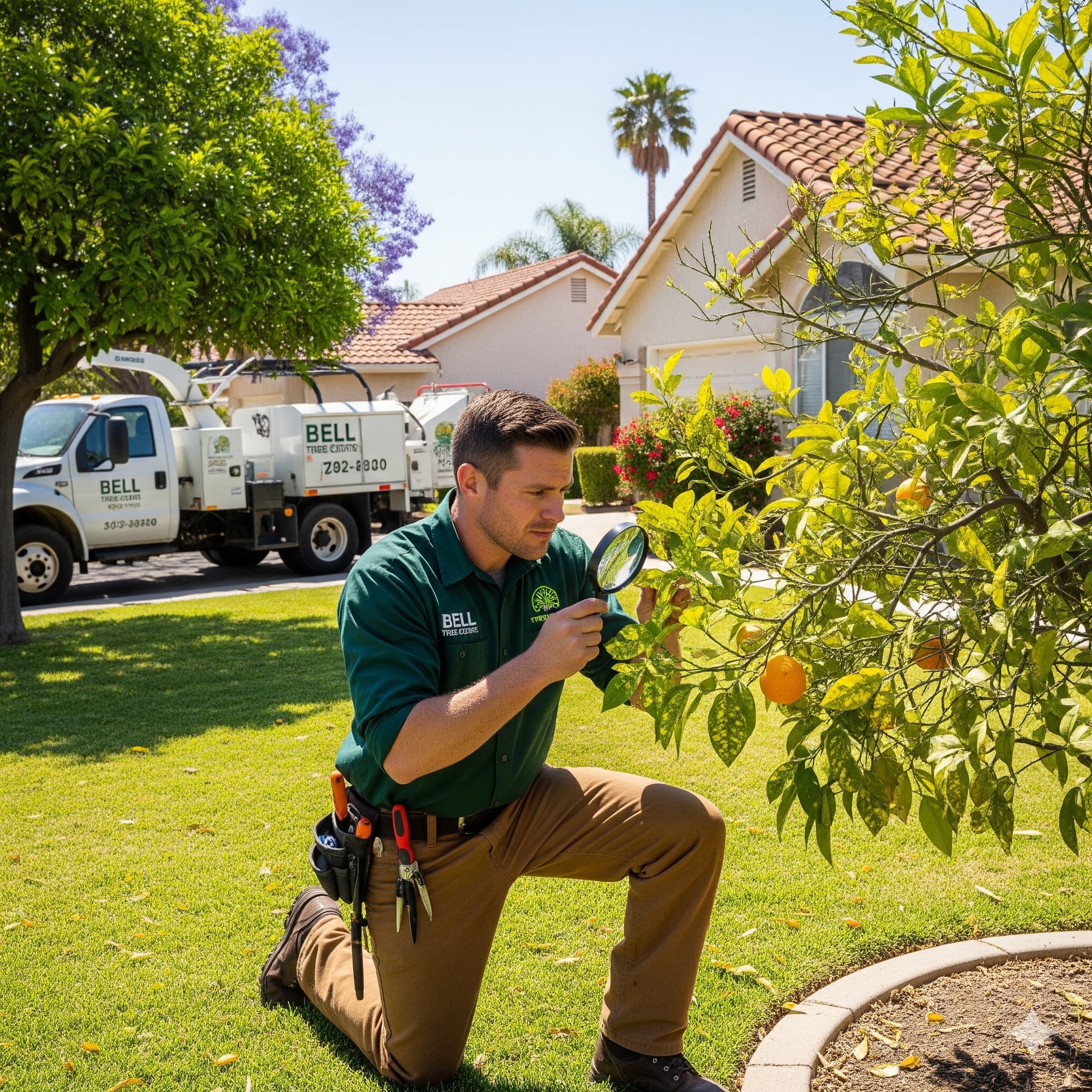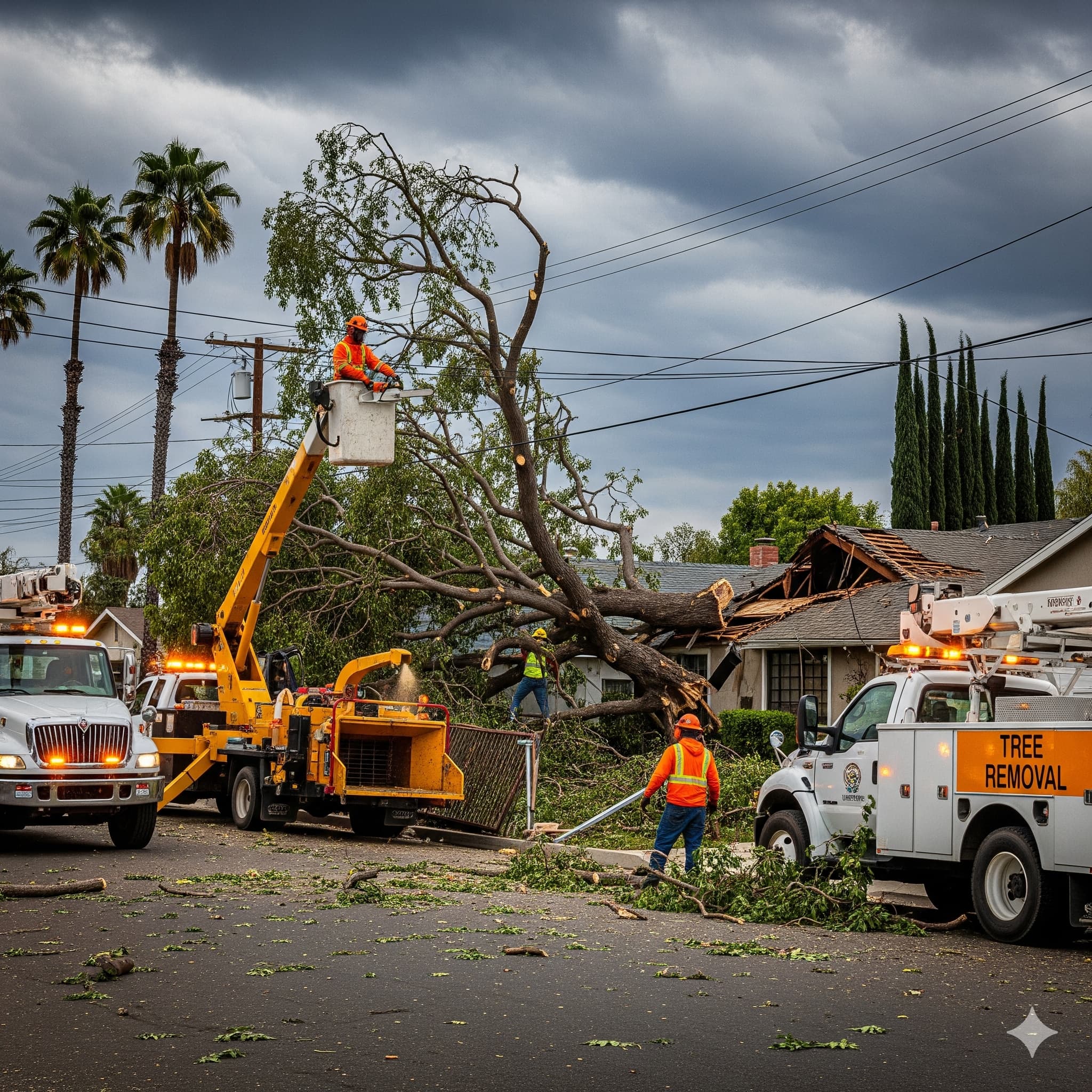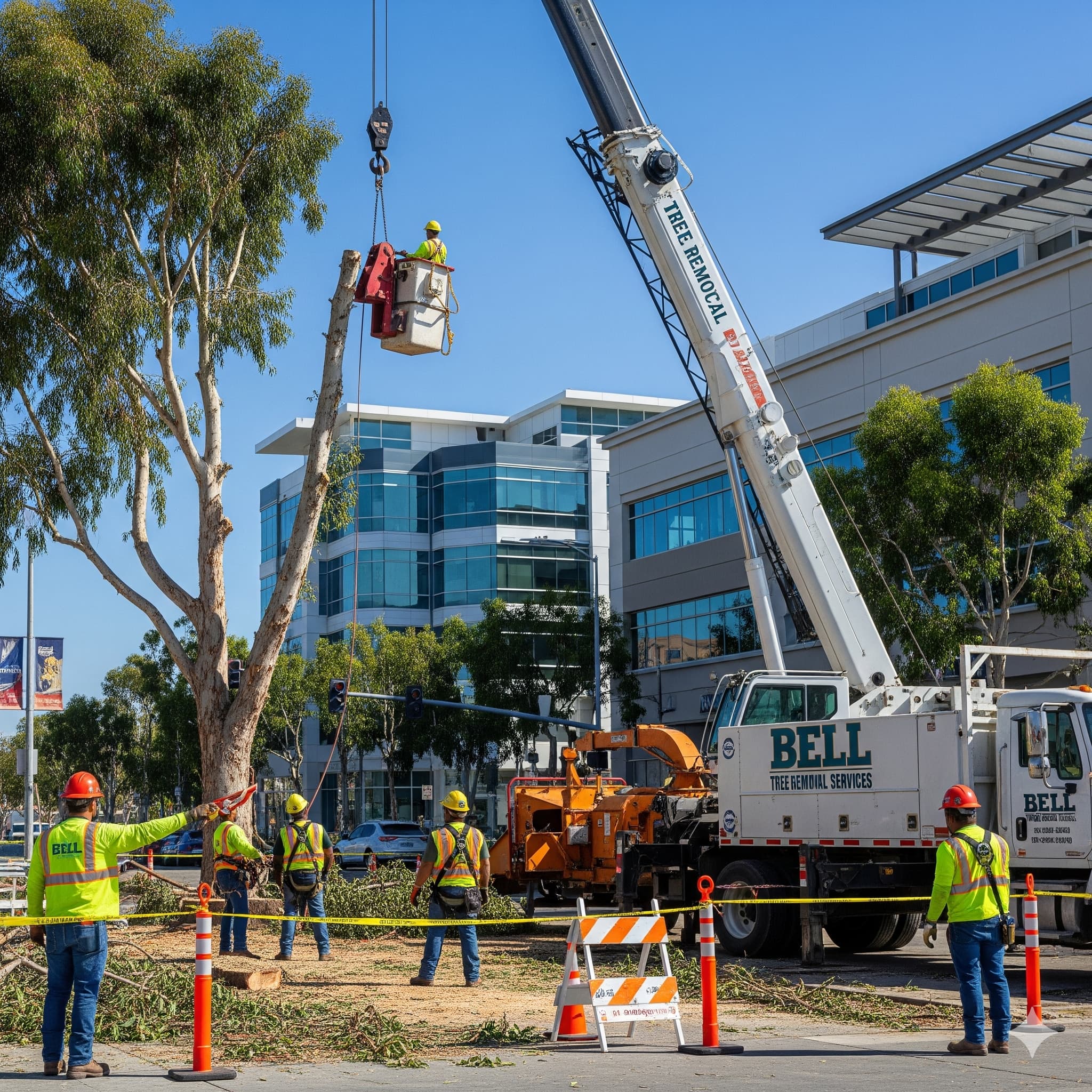
Save on Storm Insurance in Bell with Tree Health Reports
Bell, California homeowners are discovering that professional tree health assessment reports can significantly reduce storm insurance premiums while protecting their properties from expensive weather-related damage. As insurance companies increasingly recognize the value of proactive tree maintenance in preventing costly claims, certified arborist assessments have become powerful tools for securing insurance discounts and demonstrating responsible property management.
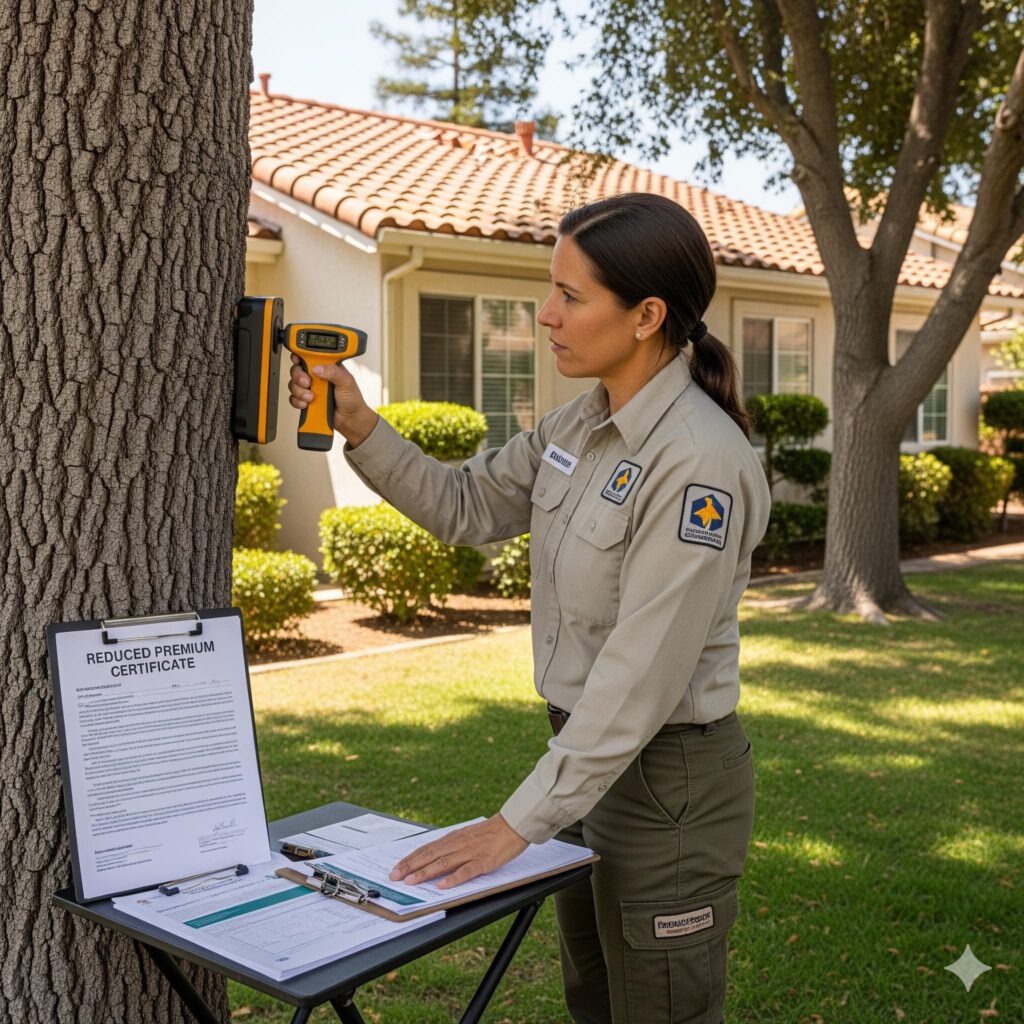
Understanding Tree Health Assessment Insurance Benefits
Risk Reduction Documentation
Insurance companies evaluate risk factors when determining homeowners’ policy premiums, and trees represent significant variables in storm damage calculations. A comprehensive tree health assessment provides documented evidence that property owners are proactively managing tree-related risks, potentially qualifying them for substantial premium reductions.
Professional assessments identify structural weaknesses, disease conditions, and environmental stressors that could lead to tree failure during storms. By addressing these issues before they become emergencies, homeowners demonstrate risk management practices that insurance companies reward through lower premiums and enhanced coverage options.
Tree health assessment reports serve as official documentation of property maintenance efforts, creating a paper trail that proves homeowners are taking reasonable precautions to prevent foreseeable damage. This documentation becomes particularly valuable when filing claims, as it shows ongoing maintenance rather than neglect.
Preventive Maintenance Documentation
Insurance providers increasingly offer discounts for homes with documented preventive maintenance programs, and tree care represents a significant component of these programs. Regular tree health assessment creates verifiable records of ongoing property maintenance that support discount applications and claim processing.
Preventive maintenance documentation helps establish that tree failures resulted from unforeseeable circumstances rather than property owner negligence. This distinction proves crucial when insurance companies investigate claims, as they may deny damage coverage they determine could have been prevented through proper maintenance.
Professional assessment reports also provide baseline conditions for tracking tree health changes over time, enabling property owners to demonstrate ongoing care and attention to potential hazards. This long-term documentation strengthens insurance relationships and may qualify properties for additional coverage options.
Professional Tree Health Assessment Process
Comprehensive Property Evaluation
Certified arborists conduct thorough evaluations of all trees on Bell properties, examining structural integrity, health conditions, and environmental factors that influence tree stability. This comprehensive approach ensures that all potential hazards are identified and documented for insurance purposes.
The assessment process includes a detailed examination of root systems, trunk integrity, branch structure, and canopy health. Arborists use specialized tools and techniques to identify hidden defects that might not be apparent to property owners but could lead to catastrophic failure during severe weather events.
Professional evaluations also consider site-specific factors such as soil conditions, drainage patterns, sun exposure, and proximity to structures or utility lines. These environmental considerations help predict tree behavior during different weather conditions and identify specific risk factors that require attention.
Detailed Risk Assessment Documentation
Tree health assessment reports include comprehensive documentation of each tree’s condition, including photographic evidence, measurement data, and professional recommendations for maintenance or removal. This detailed documentation provides insurance companies with specific information needed to evaluate risk factors accurately.
Risk assessment documentation identifies immediate hazards requiring urgent attention as well as longer-term concerns that may develop over time. This tiered approach to risk management enables property owners to prioritize maintenance investments while providing insurance companies with clear information about ongoing risk management efforts.
Professional reports also include specific recommendations for addressing identified issues, complete with timelines and cost estimates. This forward-looking approach demonstrates proactive planning that insurance companies value when determining premium rates and coverage options.
Species-Specific Health Analysis
Bell’s diverse urban forest includes numerous tree species with different health requirements and risk profiles. A professional tree health assessment provides species-specific analysis that identifies particular vulnerabilities and maintenance needs for each type of tree on the property.
Common species in Bell include Coast Live Oak, various citrus trees, eucalyptus, and palm trees, each with unique structural characteristics and health concerns. Professional assessment ensures that species-specific maintenance recommendations address the particular needs of each tree type while managing overall property risk.
Species analysis also considers how different trees interact with each other and the surrounding environment, identifying situations where one tree’s failure might affect others or create cascading damage scenarios. This comprehensive approach provides insurance companies with complete risk assessment information.
Insurance Premium Reduction Strategies
Proactive Risk Management Programs
Insurance companies reward property owners who demonstrate commitment to ongoing risk management through reduced premiums and enhanced coverage options. Tree health assessment serves as the foundation for comprehensive risk management programs that can result in significant insurance savings.
Documented risk management programs typically include regular professional assessments, timely maintenance based on arborist recommendations, and ongoing monitoring of tree conditions. These programs show insurance companies that property owners are serious about preventing claims rather than simply reacting to problems after they occur.
Many insurance providers offer specific discounts ranging from 5 to 15% for properties with documented tree maintenance programs. Some carriers provide even larger discounts for properties that demonstrate exceptional risk management through comprehensive assessment and maintenance programs.
Liability Reduction Documentation
A professional tree health assessment helps reduce liability exposure by identifying and addressing potential hazards before they cause damage to neighboring properties. This proactive approach protects homeowners from potential lawsuits while demonstrating responsible property management to insurance providers.
Liability documentation proves particularly important in urban areas like Bell, where properties are close together and tree failure can affect multiple properties. Professional assessment reports provide evidence that property owners have taken reasonable precautions to prevent damage to neighboring properties.
Insurance companies may offer enhanced liability coverage or reduced liability premiums for properties with documented tree health management programs. This additional coverage provides peace of mind while potentially saving money on overall insurance costs.
Claims Prevention Benefits
The most significant insurance savings come from preventing claims altogether through proactive tree health management. Properties with regular assessment and maintenance programs experience fewer storm-related tree damage incidents, leading to lower overall insurance costs over time.
Claims prevention benefits extend beyond immediate premium savings to include maintained claims-free discounts, lower deductibles, and continued eligibility for preferred coverage options. Properties with frequent claims may face premium increases or coverage restrictions that proper tree maintenance can help avoid.
Insurance companies track claims history when determining renewal rates, making claims prevention through tree health assessment a long-term investment in lower insurance costs. Properties that avoid tree-related claims maintain better relationships with insurance providers and have access to competitive rates.
Precision Tree Services Bell: Comprehensive Assessment Programs
Certified Arborist Evaluations
Precision Tree Services Bell provides comprehensive tree health assessment services specifically designed to support insurance discount applications and risk management programs. Our certified arborists understand insurance requirements and provide documentation that meets industry standards for premium reduction applications.
We conduct thorough evaluations of all trees on Bell properties, paying particular attention to species commonly found near landmarks like Veterans Memorial Park, Ernest Debs Park, and throughout residential neighborhoods. Our local expertise ensures assessments address the specific challenges facing trees in Bell’s Mediterranean climate.
Our assessment reports include detailed recommendations prioritized by urgency and potential impact, enabling property owners to make informed decisions about maintenance investments. This strategic approach helps maximize insurance benefits while managing maintenance costs effectively.
Insurance-Grade Documentation
We provide insurance-grade documentation that meets the specific requirements of major insurance providers serving Bell area homeowners. Our reports include all necessary technical information, photographic evidence, and professional certifications required for premium discount applications.
Documentation includes detailed condition assessments for each tree, specific maintenance recommendations with timelines, and risk assessments that quantify potential hazards. This comprehensive approach provides insurance companies with all the information needed to evaluate risk reduction efforts accurately.
We also provide ongoing consultation services to help property owners maintain compliance with insurance requirements and maximize available discounts. This long-term partnership approach ensures that assessment investments continue providing benefits throughout the relationship with insurance providers.
Customized Risk Management Plans
Beyond basic assessment services, we develop customized risk management plans that address the specific needs of each Bell property while maximizing insurance benefits. These plans integrate tree health management with overall property maintenance strategies for comprehensive risk reduction.
Risk management plans include preventive maintenance schedules, emergency response protocols, and ongoing monitoring programs tailored to each property’s unique characteristics and requirements. This customized approach ensures that insurance investments provide maximum returns while maintaining tree health and property safety.
We work directly with insurance providers when necessary to ensure that risk management plans meet their specific requirements for premium discounts and enhanced coverage options. This collaborative approach helps property owners secure maximum insurance benefits while maintaining optimal tree health.
Storm Damage Prevention Benefits
Structural Integrity Monitoring
Regular tree health assessment identifies structural weaknesses that could lead to catastrophic failure during Bell’s severe weather events, including Santa Ana winds and atmospheric river storms. Early identification and correction of these issues prevents expensive storm damage while reducing insurance claims.
Structural integrity monitoring includes evaluation of root systems, trunk conditions, and branch attachments that are most likely to fail during high-wind events. Professional assessment techniques can identify hidden defects that pose significant risks during storms but may not be apparent during calm weather.
Monitoring programs track changes in tree condition over time, enabling proactive maintenance before structural issues reach critical stages. This preventive approach avoids emergency tree removal costs while preventing damage to structures, vehicles, and neighboring properties.
Weather-Specific Risk Assessment
Bell’s location in Southern California exposes trees to specific weather-related stresses, including drought, high winds, and occasional heavy rainfall. A professional tree health assessment evaluates how local weather patterns affect different tree species and identifies specific vulnerabilities.
Weather-specific assessment considers how different species respond to seasonal stress patterns, including summer drought stress and winter storm loading. This analysis helps property owners prepare trees for seasonal challenges while minimizing storm damage risk.
Risk assessment also evaluates site-specific factors that influence how trees respond to severe weather, including soil conditions, drainage, and exposure to prevailing winds. This comprehensive analysis provides insurance companies with detailed information about actual risk factors affecting specific properties.
Emergency Preparedness Planning
Tree health assessment supports comprehensive emergency preparedness planning by identifying potential failure points and developing response strategies before emergencies occur. This proactive planning reduces storm damage costs while demonstrating risk management commitment to insurance providers.
Emergency preparedness includes identifying trees or branches that should be removed before storm season, developing evacuation routes that avoid potential tree failure areas, and establishing relationships with emergency tree services for rapid response when needed.
Preparedness planning also includes developing communication protocols with insurance providers for rapid claim processing following storm events. Having pre-established relationships and documentation streamlines the claims process while ensuring proper coverage for storm-related damage.
Long-term Financial Benefits
Premium Savings Accumulation
Tree health assessment investments typically pay for themselves within 2-3 years through insurance premium savings, with continued benefits accumulating over the long term. Properties with well-documented tree maintenance programs often see premium reductions that compound over time.
Premium savings accumulate through multiple mechanisms, including base rate reductions, maintained claims-free discounts, and eligibility for preferred coverage options. These cumulative benefits often exceed the initial assessment costs by significant margins over time.
Long-term premium savings also provide financial flexibility for ongoing tree maintenance investments, creating a self-sustaining cycle where insurance savings fund continued risk reduction efforts. This approach ensures continued benefit from both insurance savings and property protection.
Property Value Protection
Professional tree health management protects property values by maintaining mature trees that contribute to curb appeal and neighborhood character. Well-maintained trees near Bell landmarks and throughout residential areas enhance property values while reducing insurance costs.
Property value protection extends beyond individual properties to include neighborhood-wide benefits from comprehensive tree management. Areas with well-maintained urban forests command higher property values while experiencing lower insurance costs due to reduced storm damage risks.
Investment in tree health assessment also prevents costly emergency tree removal and property damage that can negatively impact property values. Proactive management maintains the aesthetic and functional benefits of mature trees while avoiding the disruption and expense of emergencies.
Risk Management Investment Returns
Tree health assessment represents a strategic investment in long-term risk management that provides returns through reduced insurance costs, prevented property damage, and maintained property values. These multiple benefit streams make assessment programs highly cost-effective risk management tools.
Investment returns include both direct financial benefits through insurance savings and indirect benefits through avoided costs of emergency tree removal, property damage repair, and potential liability issues. These combined benefits often provide substantial returns on assessment investments.
Risk management investments also provide peace of mind benefits that are difficult to quantify but valuable to property owners. Knowing that trees are properly maintained and potential hazards are identified reduces stress and uncertainty during severe weather events.
Implementation Strategy for Bell Homeowners
Assessment Scheduling and Planning
Optimal tree health assessment scheduling aligns with insurance policy renewal cycles to maximize premium reduction benefits. Most insurance companies review risk factors annually, making annual assessment reports ideal for maintaining discount eligibility.
Planning should also consider seasonal factors that affect tree condition evaluation, with fall and winter assessments providing the most comprehensive view of structural integrity before storm season. Spring assessments can evaluate trees’ response to winter weather and identify new maintenance needs.
Assessment scheduling should integrate with overall property maintenance planning to ensure that recommended tree maintenance work aligns with other landscape projects and budget considerations. This coordinated approach maximizes efficiency while ensuring that all maintenance needs are addressed promptly.
Insurance Provider Coordination
Successful implementation requires coordination with insurance providers to understand specific requirements for premium discounts and ensure that assessment reports meet their documentation standards. Different insurance companies may have varying requirements for risk management documentation.
Coordination should begin early in the process to ensure that assessment reports include all necessary information for discount applications. Some insurance companies may require specific certifications, documentation formats, or maintenance commitments to qualify for premium reductions.
Ongoing communication with insurance providers helps maintain discount eligibility and may identify additional opportunities for premium reductions through enhanced risk management programs. Building strong relationships with insurance representatives can provide valuable guidance for maximizing insurance benefits.
Long-term Maintenance Integration
Tree health assessment provides the foundation for long-term maintenance programs that continue providing insurance benefits while ensuring optimal tree health. Integration with ongoing landscape maintenance ensures that recommended work is completed promptly and documented appropriately.
Long-term maintenance integration includes developing relationships with qualified tree service providers who understand insurance requirements and can provide necessary documentation for continued discount eligibility. This professional network ensures that maintenance work meets both tree health and insurance requirements.
Maintenance integration also includes budget planning for ongoing tree care investments, ensuring that properties maintain the risk management programs necessary for continued insurance benefits. This financial planning makes tree health management a sustainable long-term strategy.
Professional tree health assessment represents one of the most effective strategies for reducing storm insurance costs while protecting Bell properties from weather-related damage. Through comprehensive evaluation, documentation, and ongoing maintenance planning, these programs provide substantial financial benefits while ensuring the long-term health and safety of community trees.
